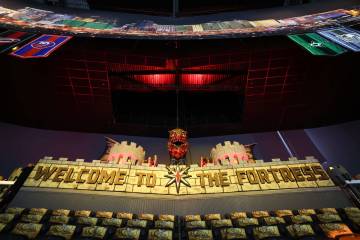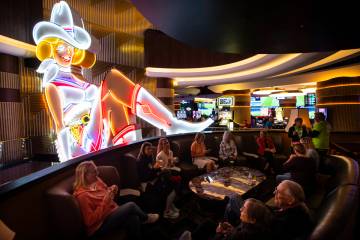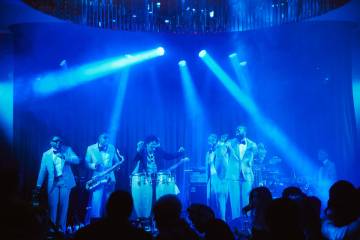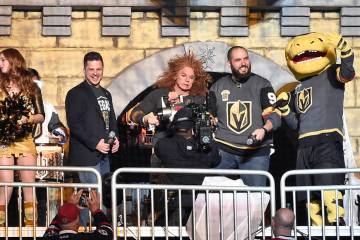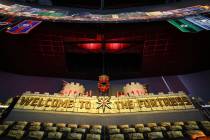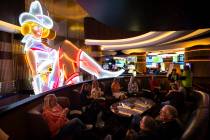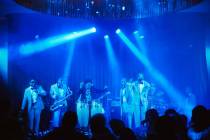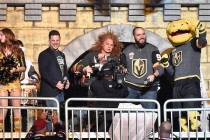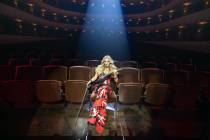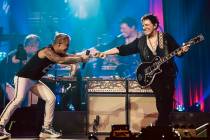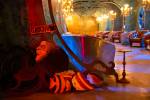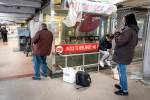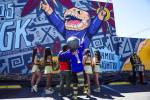Artist turns discarded furniture into wildlife sculptures in ‘Trophy Hunter’
To Bryan Christiansen, the deer is a reminder of his childhood in rural South Dakota where he spent a great deal of time alone because his parents each had a long commute to work.
"Nature, the outdoors, was a big part of my growing up experience. I spent a great deal of time with nature, with deer. I grew up with those animals. And, now, deer represent my childhood," he said in a recent telephone interview from Reno, where he lives and works.
The many facets of Christiansen's childhood come together in his distinctive art that blends his love of home and his love of nature. An exhibition of his work, "Bryan Christiansen: Trophy Hunter," is on display in the Big Springs Gallery in the Origen Museum at the Springs Preserve.
Christiansen, who holds a finance degree from the University of Nevada, Reno, also studied art in college.
"I had gone about halfway through my bachelor's degree and I was making a lot of sculptures. A lot were biomorphic -- art based on living organisms -- large, lifelike, but I didn't have a specific direction," he recalled. "I'd been thinking a lot about where I'd come from and, one summer, I went back home to South Dakota for three months and reconnected with my roots. Since then, I've spent a lot of time thinking about my childhood preoccupations, mostly the outdoors."
The repurposing of discarded furniture to use in his art, Christiansen said, came about on impulse.
"I was broke, and it was a bit serendipitous. I was driving around with this idea to make a deer. I didn't know how I would make it. I saw a child's mattress in a cemetery and I was repulsed by it, but the mattress, as an object in itself, interested me. I picked it up."
Discarded mattresses, box springs, couches and chairs that he finds all become part of the art, and the finished work has been well-received. In fact, Christiansen said, "I've been overwhelmed by the response. People really like it."
Of course, not everything he finds goes into his art. When he finds insects or mold in a piece of furniture, he throws it out. Otherwise, in hunting terms, after he's found his "trophy," he takes it apart down to its bones, preserving every usable part, as hunters would do.
"My art is to an extent performance art," Christiansen said. "My work represents psychological ideas brought together with pop art along with the performance element. It didn't make sense to me to just make an object. Bringing the idea of hunting to it, engaging my body, is performance."
He decided on sculpture as his medium because, he said, "you relate to sculpture in a different way because it takes up your space. You have to pay attention to it, unlike a painting hanging on a wall that is easy to ignore.
"The deer is immediately recognizable. When people realize what the sculpture is made from, they also relate."
Christiansen enjoys watching people when they look at his work. "I see adults interacting with the deer sculptures the way children do. Deer are docile and approachable and are inviting and intriguing. It's impossible to get people to keep their hands off them. People even kiss them and that, considering where they come from, is an interesting dynamic. It's great to watch little kids because they immediately love this."
"Bryan Christiansen: Trophy Hunter" is on display through Jan. 22.
Preview
"Bryan Christiansen: Trophy Hunter"
10 a.m.-6 p.m. daily
Springs Preserve, 333 S. Valley View Blvd.
Admission: $4.95-$18.95, depending on age and residency; free to members





